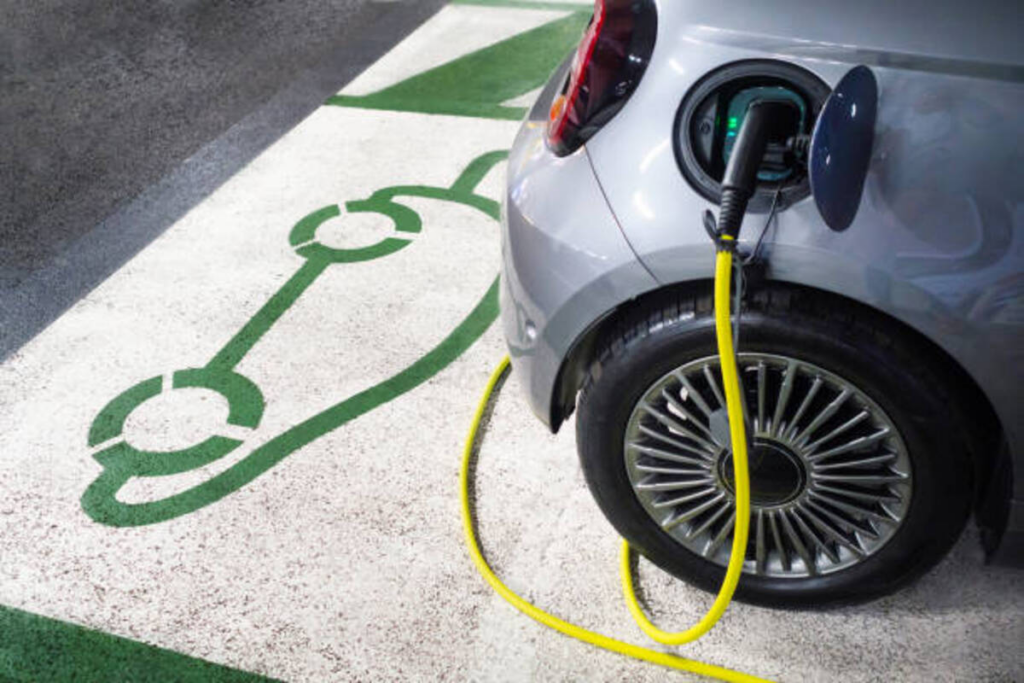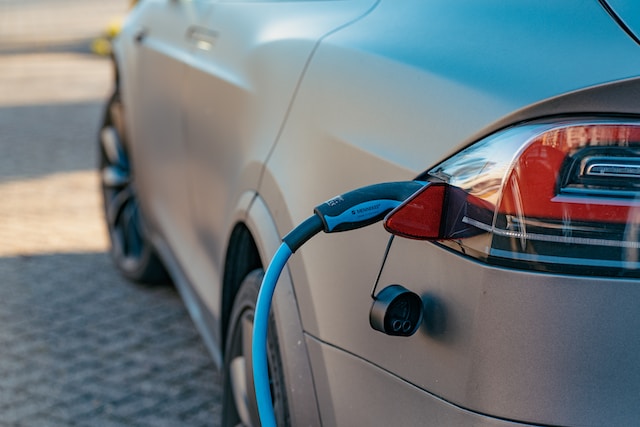Charging an electric vehicle (EV) is slightly more complex than pumping gas into a gasoline-powered vehicle. It is simple but involves a slight learning curve, considering the diverse and evolving EV charging technologies. Understanding how EV chargers work will help you avoid complications whenever you need to juice up your EV. Here is a comprehensive EV charging guide.
What is EV Charging & How Does It Work?
Electric Vehicles run on electric power stored in large battery packs. Battery sizes and storage capacities vary depending on the make and model, and all batteries deplete over time and must be recharged regularly to keep running.
You can charge your EV at an EV charging station, which draws current power from the electric grid. Charging stations vary in type, size, and power. They include private charging stations installed at home and public ones located at workplaces, commercial parking lots, and dedicated charging hubs.
EV charging stations are based on Alternating Current (AC) or Direct Current (DC) electric currents. However, all EV batteries can only accept DC power. To this end, a battery charger in the EV converts the AC to DC before transferring it to the battery.
EV Charging Levels Explained
EV chargers vary in type and power, just like gasoline fuels vary in type. Overall, they are categorized into the following types:
Level 1 EV Chargers
Level 1 EV chargers are the simplest and least powerful. They are compatible with the standard 120-volt power outlets, the type that you use with ordinary household electronics.
Level 1 chargers are simple because they don’t require the installation of any additional charging equipment. The electric cord and plugs are affordable, portable, and compatible with most ordinary power outlets.
However, Level 1 chargers are slow. They charge EV batteries at rates of two to five miles per hour. To this end, they are recommended for overnight charging at home. They are also mostly suitable for low-mileage drivers; most American car owners drive an average of 31 miles daily, making Level 1 chargers sufficient for many EV users.

Level 2 EV Chargers
Level 2 EV chargers are up to 15 times faster than Level 1 chargers. They are compatible with standard 240-volt residential and 208-volt commercial power outlets.
240-volt power outlets are commonly used with heavy-duty electric appliances, such as washers and dryers, making it possible to use a Level 2 charger at home. However, Level 2 EV home charging stations should only be installed by professional and certified electricians. Interestingly, Level 2 chargers are compatible with solar panel systems, making them sustainable and cost-effective.
Level 2 EV chargers recharge batteries at rates of ten to 50 miles per hour. They are fast and powerful enough to recharge high-capacity batteries from zero to full overnight or in a few hours. Most EV manufacturers have their own dedicated Level 2 EV chargers and public charging stations.
Level 3 (DCFC) EV Chargers
Level 3 EV chargers are also commonly known as DCFC or DC chargers. Level 3 charging stations draw Direct Current power directly from the power grid. The chargers then feed DC power directly into the EV battery, bypassing the need to convert AC to DC. To this end, DC charging stations are fast and can add 60 to 80 miles in as little as 20 minutes.
DC charging stations are categorized into the following three types:
- Combined Charging System (CCS)
- CHAdeMO (CHArge de MOve)
- Tesla Superchargers
Level 3 EV charging stations are not compatible with standard home-based power outlets. They require highly specialized equipment to install and maintain. To this end, DC charging stations are only used in industrial and commercial applications. They are a bit expensive but also convenient to use, especially when driving long distances.
Most EVs are compatible with Level 3 chargers, but not all. To this end, some EVs require adapters and special plugs to work with DC charging stations.
Tesla Superchargers
Tesla Superchargers are categorized as Level 3 or DC chargers, but they are exceptionally fast and powerful. On average, these charges can add from 162 to 200 miles in 15 minutes, depending on the Tesla model and battery capacity. Overall, a Tesla Supercharger can recharge an empty Tesla battery to full capacity in about 30 minutes.
Tesla has more than 25,000 dedicated superchargers across the world. However, Tesla Superchargers only work with Tesla EVs.
How to Find EV Charging Stations Near You
More EV charging stations are popping up all over the United States and worldwide as more people buy EVs. However, some locations are underserved, making it difficult to find a charging station near you. You can make your search easier by knowing where to look.
More workplace buildings are setting up EV charging stations for their employees and other users, so check if yours has one. Alternatively, you can try commercial EV charging stations; many local electric utility companies now offer free or paid EV charging services.
Driving around town looking for EV charging stations takes time. Fortunately, using EV charging station finder apps can save you time and reveal more options. The best apps include the following:
- Plugshare – Shows over 140,000 charging stations across the United States and Canada.
- ChargeHub – Shows over 3,000 charging stations across the United States.
- Department of Energy Alternative Fueling Stations App – Shows all public charging stations across the United States (currently lists over 48,000 charging stations).
Besides listing available charging stations, these apps also filter the results based on factors such as charging levels, prices, and networks. They also continually update their databases as more charging stations pop up.

You can also download charging networks providers’ apps, including the following:
- EVgo
- EV Connect
- ChargePoint
- Volta
- Electrify America
However, these apps only show charging stations provided by their networks. It is also worth noting that some charging networks are not operational across all states. Overall, installing your own Level 1 or 2 charging station at home would be the most reliable solution.
Conclusion
Charging your EV is simple, but getting used to the different charging stations may take some time. You can also quickly and easily find charging stations by finding one or more apps. However, you should consider installing a personal EV charging station at home or the workplace for fast and convenient charging.
